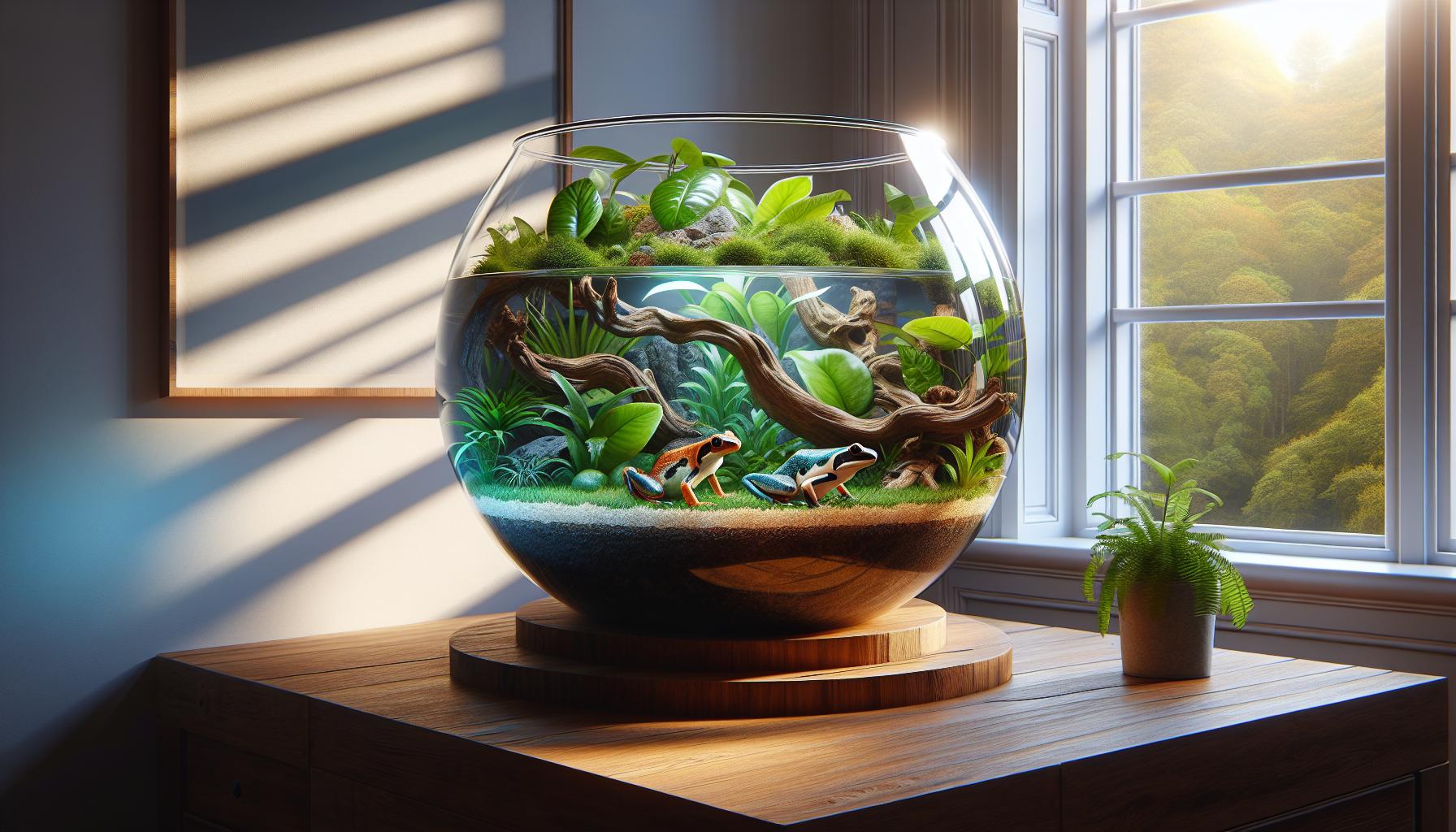Meet the internet’s latest sensation: the cute:acdwqjugvdu= frog, a peculiar string of characters that’s hopping its way through social media feeds and creating quite the digital buzz. This quirky combination of letters and symbols might look like a keyboard malfunction, but it’s actually become a playful internet phenomenon. In a world where memes evolve faster than actual frogs, this unconventional phrase has morphed into a symbol of digital culture’s delightful randomness. Whether it’s appearing in viral tweets, Instagram captions, or TikTok trends, this amphibian-inspired text anomaly continues to perplex and amuse users across the web.
Cute:acdwqjugvdu= Frog
Frogs captivate pet owners with their distinctive charm and unique personality traits. Compact aquatic habitats showcase their natural behaviors while requiring minimal space in homes or apartments.
Physical characteristics contribute significantly to their appeal:
- Large expressive eyes that create an endearing appearance
- Smooth colorful skin patterns ranging from vibrant greens to mesmerizing blues
- Tiny webbed feet that move gracefully through water
- Round bodies that appear plump and huggable
Behavioral traits enhance their charm:
- Gentle temperaments make them suitable for handling
- Interactive responses to their owners’ presence
- Fascinating hunting displays when catching prey
- Melodic croaking sounds that create ambient atmosphere
Care requirements align perfectly with busy lifestyles:
- Simple tank setups with basic water features
- Weekly feeding schedules for most species
- Monthly habitat maintenance routines
- Cost-effective dietary needs
Common pet frog species offer varied appeal:
| Species | Size (inches) | Lifespan (years) | Care Level |
|---|---|---|---|
| Pacman | 4-6 | 6-10 | Beginner |
| Fire-Bellied | 1-2 | 10-15 | Intermediate |
| White’s Tree | 3-4 | 15-20 | Advanced |
| African Dwarf | 1-1.5 | 5-8 | Beginner |
These amphibians demonstrate remarkable adaptability to captive environments. Their minimal space requirements coupled with straightforward care protocols make them attractive options for first-time pet owners or experienced enthusiasts seeking low-maintenance companions.
Popular Cute Frog Species for Pet Owners

Pet frogs combine fascinating behaviors with manageable care requirements, making them excellent companions for both novice and experienced keepers. Here are two popular species known for their distinctive charm and personality.
Pacman Frogs
Pacman frogs feature large round bodies with vibrant patterns in green, brown or yellow colorations. These sedentary amphibians reach sizes of 4-8 inches, earning their nickname from their wide mouths and hearty appetites. Their care requirements include:
- Temperature range of 75-85°F
- Humidity levels between 60-80%
- 10-gallon terrarium with 2-3 inches of substrate
- Diet of crickets, worms nightcrawlers
- Lifespan of 6-10 years in captivity
Female Pacman frogs grow larger than males displaying more vivid colors. Their docile nature makes them ideal display pets though they prefer minimal handling.
Red-Eyed Tree Frogs
Red-Eyed Tree Frogs showcase striking features with emerald green bodies bright red eyes orange feet. These arboreal amphibians measure 2-3 inches long displaying these care specifications:
- Vertical terrarium setup with climbing branches
- Temperature maintained at 75-85°F
- Humidity levels of 80-100%
- Diet focused on crickets moths flies
- Average lifespan of 5-8 years
Their nocturnal activity pattern means peak movement occurs during evening hours. Morning brings their signature sleeping pose – tucked legs white underbelly pressed against leaves. These frogs excel at climbing using specialized toe pads to navigate vertical surfaces.
Creating the Perfect Habitat

A proper habitat setup ensures frog health through appropriate environmental conditions. The enclosure design incorporates specific elements that mimic natural environments while maintaining essential care parameters.
Tank Setup Requirements
The ideal frog enclosure features a secure glass or acrylic tank with adequate ventilation. A 10-20 gallon terrarium accommodates most pet frog species comfortably. The substrate consists of coconut fiber or sphagnum moss at 2-3 inches deep for burrowing species. Live or artificial plants provide cover spaces while maintaining humidity levels. A shallow water dish enables soaking without drowning risks. UVB lighting operates on a 12-hour cycle to support vitamin D3 synthesis. Essential accessories include:
- Thermometer placement in two tank zones
- Hygrometer for humidity monitoring
- Feeding dish for easy cleanup
- Hide boxes in cool dark areas
- Climbing branches for arboreal species
Temperature and Humidity Needs
Temperature gradients create distinct microclimates within the enclosure. The basking spot maintains 85°F during daytime hours while the cool end stays at 75°F. Nighttime temperatures drop to 70-75°F across all areas. Digital hygrometers track humidity levels in these ranges:
| Species Type | Humidity Range | Temperature Range |
|---|---|---|
| Terrestrial | 60-80% | 75-85°F |
| Arboreal | 80-100% | 72-82°F |
| Aquatic | 70-90% | 68-78°F |
Misting systems or hand spraying maintains moisture levels. A drainage layer prevents water accumulation. Proper ventilation prevents stagnant air while preserving humidity.
Feeding Your Pet Frog

Pet frogs consume a diet of live insects such as crickets, mealworms, waxworms or dubia roaches. Small frogs eat prey items 1/4 the size of their head width, while larger species consume insects up to 1/2 their head size.
Feeding schedules vary based on the frog’s age:
- Juvenile frogs (under 6 months) eat daily portions of 4-6 insects
- Adult frogs consume 4-8 insects every 2-3 days
- Large species like Pacman Frogs eat 2-3 larger prey items weekly
| Frog Size | Prey Size | Feeding Frequency |
|---|---|---|
| Small (<2″) | 1/4″ insects | Daily |
| Medium (2-4″) | 1/2″ insects | Every 2-3 days |
| Large (>4″) | 3/4″ insects | Every 3-4 days |
Gut loading enhances insect nutritional value by feeding them vitamin-rich foods 24 hours before offering them to frogs. Dusting feeder insects with calcium supplement occurs 2-3 times weekly for adults and daily for juveniles.
Key feeding practices include:
- Offering food during active periods (evening for nocturnal species)
- Removing uneaten prey within 24 hours
- Using feeding tongs to prevent substrate ingestion
- Maintaining clean water dishes
- Monitoring food consumption patterns
Live prey movement stimulates natural hunting behaviors essential for frog health. Commercial frog pellets supplement live prey diets in some species but don’t replace them entirely. Varied diets promote optimal nutrition absorption.
Health and Care Tips
Regular health monitoring ensures pet frogs maintain optimal wellness throughout their lives. Observing physical appearance reveals potential health issues early, with clear eyes, smooth skin, active behavior indicating good health.
Common Health Signs to Monitor:
- Skin changes including discoloration or lesions
- Lethargy or reduced activity levels
- Changes in eating patterns or appetite loss
- Abnormal posture or difficulty moving
- Swelling around eyes or limbs
- Unusual discharge from eyes or nose
Preventive Care Measures:
- Clean water changes every 2-3 days
- Weekly habitat sanitization
- Monthly deep cleaning of all enclosure components
- Regular temperature humidity monitoring
- Proper ventilation maintenance
- Vitamin D3 calcium supplementation twice weekly
- Isolate new frogs for 30 days
- House sick frogs separately from healthy ones
- Use separate feeding equipment for quarantined frogs
- Monitor quarantined frogs twice daily
- Record behavioral eating patterns
- Document any symptoms changes
| Health Parameter | Normal Range | Check Frequency |
|---|---|---|
| Temperature | 72-82°F | Daily |
| Humidity | 60-80% | Daily |
| Weight | Species dependent | Weekly |
| Shedding | Complete shed | Monthly |
| Fecal check | Normal consistency | Weekly |
Veterinary care from an amphibian specialist supports long term health maintenance. Professional check ups enable early detection of parasites bacterial infections fungal issues. Maintaining detailed health records helps track patterns identify concerns establish baseline wellness parameters.
The cute:acdwqjugvdu= frog trend perfectly captures the internet’s ability to transform random elements into beloved phenomena. Beyond the digital realm frogs have proven themselves as captivating pets that bring joy through their unique characteristics and manageable care requirements.
Whether it’s a Pacman Frog’s charming roundness or a Red-Eyed Tree Frog’s stunning appearance proper habitat setup and attention to dietary needs ensure these amphibians thrive in captivity. With regular health monitoring and appropriate care these fascinating creatures can become delightful long-term companions for any pet enthusiast.

